Year End Tax Planning Tips and Strategies

With the holidays on the horizon, now is the time to plan in order to optimize your tax liability for 2019 and 2020. We encourage our clients to have a discussion with us and their tax accountant now to determine how best to address their current tax situation. While there are no drastic tax law changes planned for 2020, the IRS has rolled out the tax rate changes and inflation adjustments for next year, which are listed below.
2019 Year-End Planning
For 2019 year-end planning, there are a few areas where we suggest you focus:
Capital Gains
The capital gains tax rate for long-term capital gains and qualified dividends remains at 0%, 15% or 20%, depending on your income bracket. Opportunities to minimize your tax in this area include:
- Hold capital assets for more than 12 months to take advantage of the lower long-term capital gains rates.
- Gift appreciated stock or mutual fund shares to relatives in a lower income tax bracket who could pay lower capital gains taxes when the asset is sold.
- Gift appreciated stock or mutual fund shares to charities in lieu of cash. In many cases, you can deduct the full value of the gift and avoid paying capital gains taxes.
- Sell unrealized loss positions in other investments to offset capital gains recognized during the year.
Net Investment Income Tax (NIIT)
In addition to income tax, individuals with Modified Adjusted Gross Income (MAGI) of $200,000 or more ($250,000 if married, filing jointly) may be subject to NIIT of 3.8%. Please consult with your tax accountant for specific details on how the tax is calculated. Opportunities in this area include:
- Sell investments over a series of annual installments, rather than all at once, to reduce gains and income in a specific year.
- Sell unrealized loss positions in other investments to offset capital gains income recognized during the year.
- Invest in tax-exempt securities. Income from these investments is not subject to the NIIT.
Other areas to consider include:
- Medical Expenses – Consolidate as many medical payments as possible into the same year, to take advantage of the tax deduction. This could mean accelerating payments into 2019, or deferring to 2020. Medical expenses are only deductible to the extent they exceed 10% of adjusted gross income.
- Charitable Gifts – Cash gifts to public charities are deductible up to 60% of adjusted gross income, and gifts of property (including stock donations) are deductible up to 30% of AGI. Any excess can be carried forward up to five years.
- 401K, FSA and HSA Contributions – These are not subject to federal tax, and may reduce your taxable income. Benefit plan limits for 2019 and 2020 are shown below.
2020 Planning
Below are the tax rate changes and adjustments for inflation that the IRS has issued for 2020, which are slight increases from the prior year. More information is available here.
The IRS is revamping the W-4 for 2020 (a draft can be found here) to take into account the recent tax law changes from the Tax Cuts and Jobs Act of 2017. We recommend that you file a new W-4 form for 2020 and encourage your employees to do the same to ensure that your withholdings reflect the most updated information.
Standard Deduction
- Married filing jointly – $24,800 for 2020 (up $400 from the prior year)
- Single taxpayers and married individuals filing separately – $12,400 for 2020 (up $200 from the prior year)
- Head of household – $18,650 for 2020 (up $300 from the prior year)
Tax Rates
- 37% for individual single taxpayers with incomes greater than $518,400 ($622,050 for married couples filing jointly).
- 35%, for incomes over $207,350 ($414,700 for married couples filing jointly);
- 32% for incomes over $163,300 ($326,600 for married couples filing jointly);
- 24% for incomes over $85,525 ($171,050 for married couples filing jointly);
- 22% for incomes over $40,125 ($80,250 for married couples filing jointly);
- 12% for incomes over $9,875 ($19,750 for married couples filing jointly).
2020 Benefit Plan Limits
- 401(k) Contributions
- Employee Contribution – $19,500 (up from $19,000 in 2019)
- “Catch-up” – $6,500 (up from $6,000 in 2019)
- Health Savings Accounts
- Individual – $3,550 (up from $3,500 in 2019)
- Family – $7,100 (up from $7,000 in 2019)
- “Catch-up” – $1,000 (no change from 2019)
- Health Flexible Spending Accounts
- Individual – $2,750 (up from $2,700 in 2019)
- Dependent Care – $5,000 (no change from 2019)
If you have questions or concerns, please contact me, a member of your JDJ team, or your tax accountant.



















